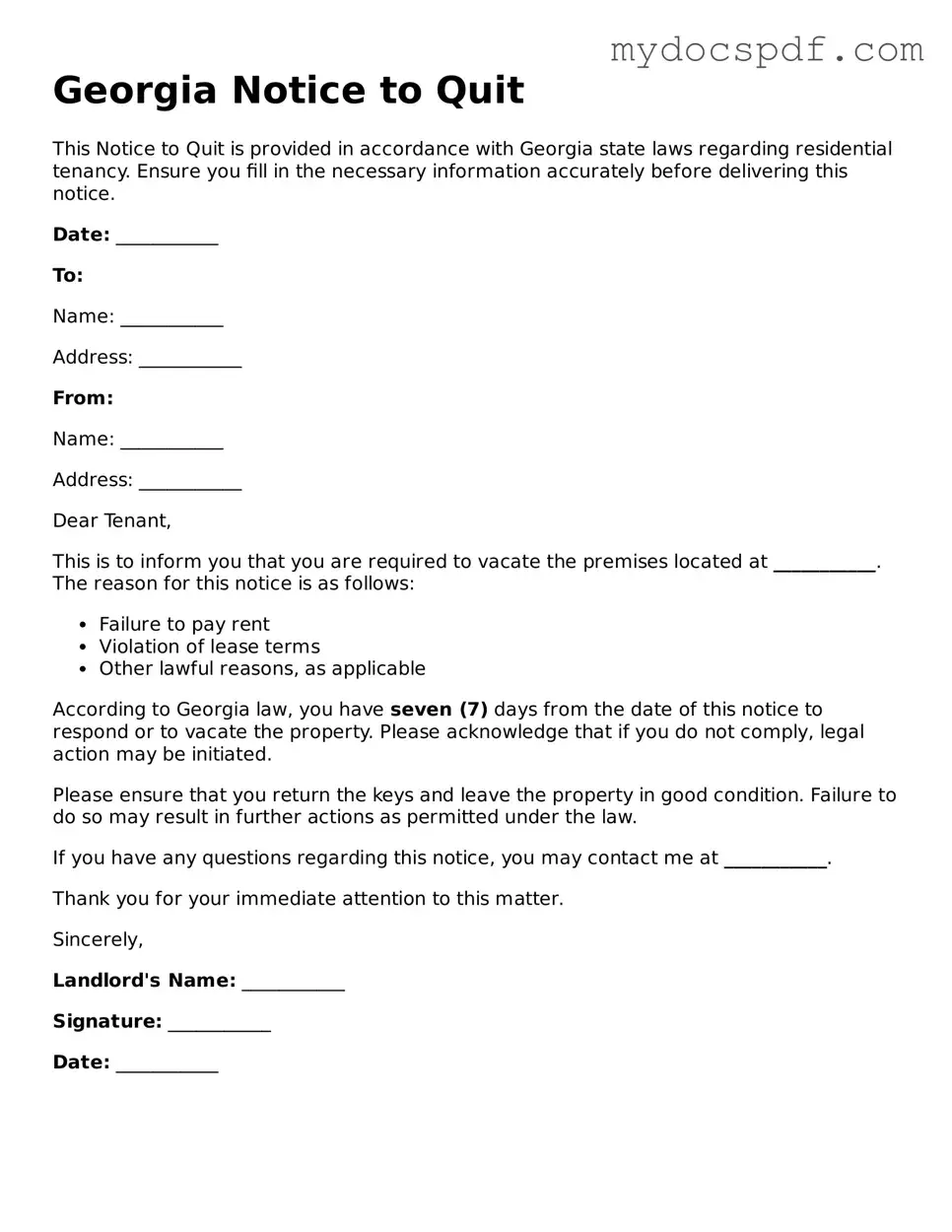Fillable Georgia Notice to Quit Document
The Georgia Notice to Quit form serves as a formal notification to tenants, indicating that they must vacate the rental property. This document plays a crucial role in the eviction process, ensuring that landlords adhere to legal requirements while providing tenants with the necessary information regarding their tenancy. Understanding this form is essential for both landlords and tenants to navigate the complexities of rental agreements and housing laws in Georgia.
Access Editor Here
